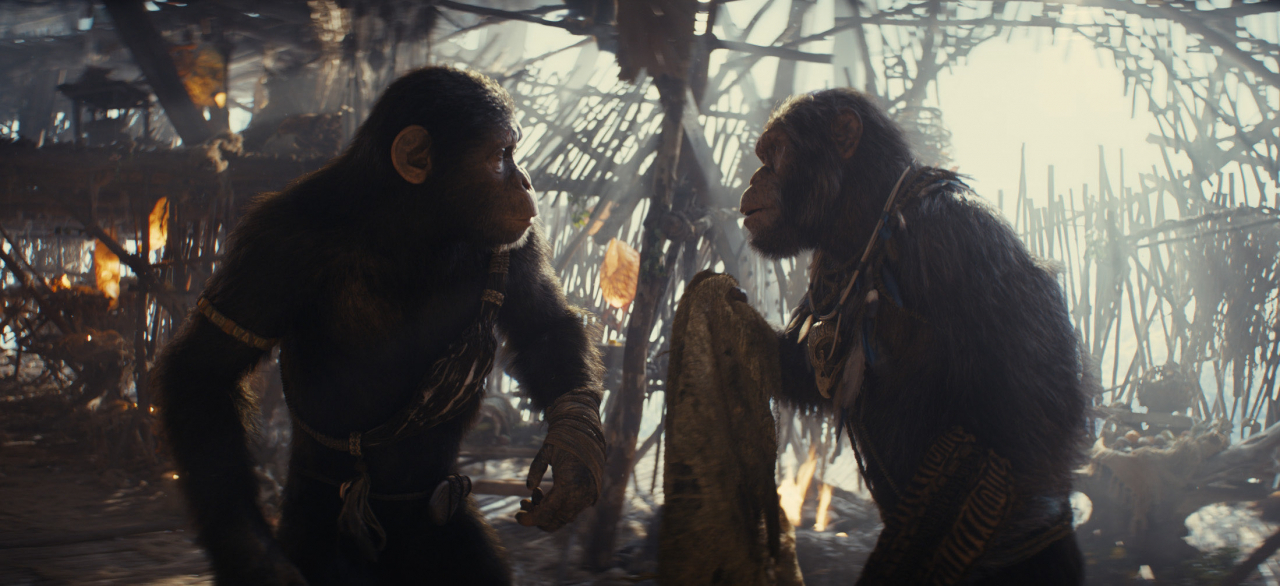 |
A scene from "Kingdom of the Planet of the Apes" (Walt Disney Company Korea) |
Since its first outing in 2011, Planet of Apes reboot has demonstrated the pinnacle of visual effects in its realistic depiction of primates.
The series has earned global recognition for its VFX techniques, including visual effects nominations at both the BAFTAs and the Academy Awards.
Now, a fourth installment, "Kingdom of the Planet of the Apes," is in cinemas, seven years after the previous one.
According to the producers, the movie showcases even more advanced visual effects, a culmination of progress in VFX techniques over the course of seven years.
The movie is a separate storytelling endeavor from the trilogy that preceded it. And it differs significantly in the way the primates are created, according to the producers.
"Previously, the animation (of apes) was manually crafted to match the image references of (actors). However, now, virtual characters that are identical to the actors are created on computers, and the numerical values obtained (from filming the actors) are applied to the characters," said Charlie Kim, the senior facial modeler at Weta FX, during an interview held in Jongno-gu, Seoul, on Tuesday.
Weta FX is a New Zealand-based digital visual effects company responsible for creating animated sequences for several major films, including the "Lord of the Rings" series and "Avatar: The Way of Water."
"Consequently, the virtual characters exhibit facial expressions and behaviors that mirror those of the actors precisely," he added.
Kim said the film uses advanced VFX to make the apes more realistic than ever, especially since "Kingdom of the Planet of Apes" emphasizes ape interactions more than previous installments.
The latest installment, set in a world where humans have relinquished their dominion over the planet to advanced civilizations with diverse types of primates, is the first of the series to have apes act as the only protagonists and humans limited to supporting roles.
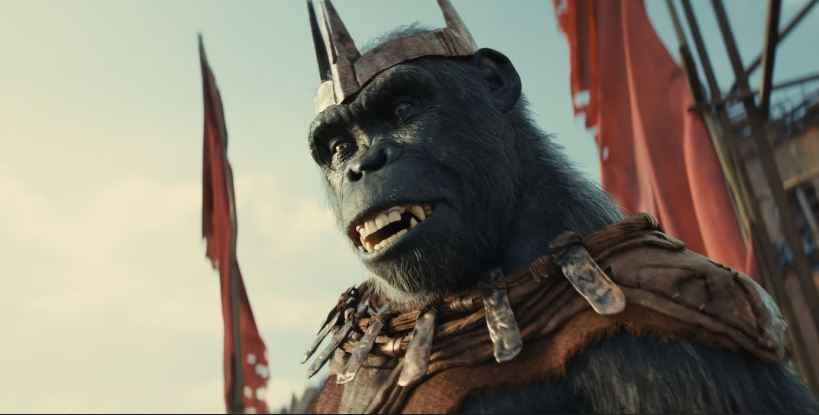 |
A scene from "Kingdom of the Planet of the Apes" (Walt Disney Company Korea) |
"In the past series, (apes) didn't engage in much dialogue or require extensive expressions. Communication often relied on vocalizations and physical gestures," said Kim.
"However, now there's a greater emphasis on nuanced conversational expressions. If you watch the movie, you will be able to see the significant leap in technological prowess," he added.
Jess Sun, the motion tracker of the film, added technological advancements allowed her to work more efficiently.
"In previous works, we captured people's motions one at a time. However, now, it is possible to capture up to 10 people simultaneously," she said.
Erik Winquist, the VFX supervisor, pointed out that the vastly enhanced visual effects helped give the movie a unique look.
"The previous three films both aesthetically and in tone were heavy. They were a bit bleak. We were talking about an apocalypse," said Winquist, during a press conference held on the same day.
"(However,) this is a fun adventure story that aesthetically looks very different from the previous films. The cinematic language that we use is very different from those of previous films," he said.
"Kingdom of Planet of Apes" will hit local theaters on May 8.
 |
Charlie Kim, senior facial modeler, and Jess Sun, motion capture tracker at Weta FX (Walt Disney Company Korea) |
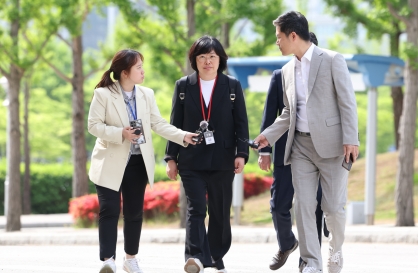

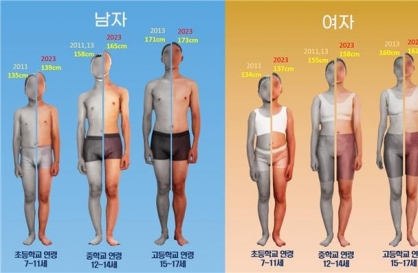



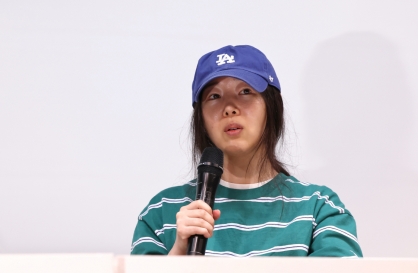
![[Weekender] Korean psyche untangled: Musok](http://res.heraldm.com/phpwas/restmb_idxmake.php?idx=644&simg=/content/image/2024/05/02/20240502050841_0.jpg)